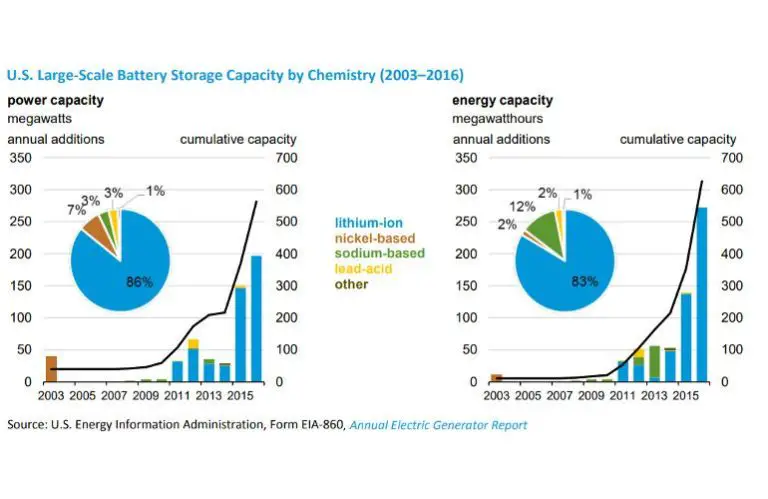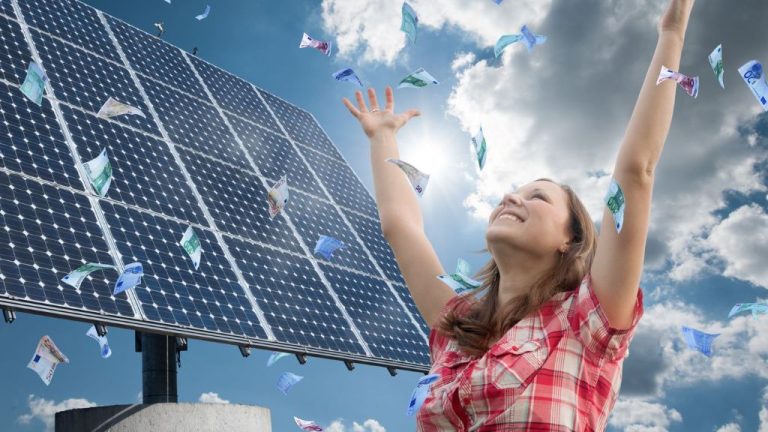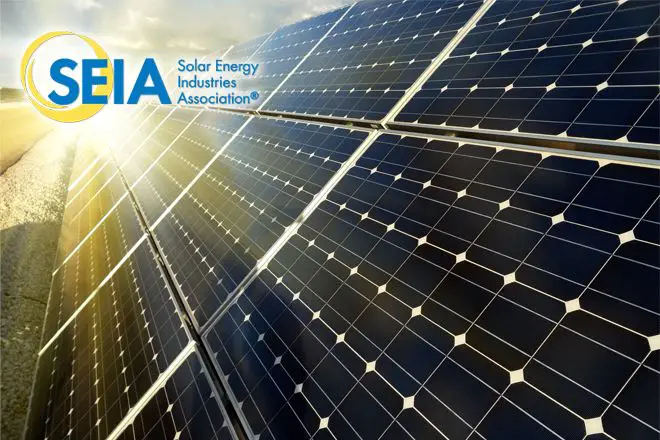Do Solar Panels Use Photovoltaics?
What are solar panels?
Solar panels, also known as photovoltaic (PV) panels, are devices that convert sunlight into electricity. They are made up of solar cells, which absorb photons from sunlight and generate an electrical current through the photovoltaic effect. The photovoltaic effect refers to the creation of voltage or electrical current in a material upon exposure to light. Solar cells are typically made from silicon and arranged in a grid-like pattern on the solar panel.
Solar panels work differently from solar thermal collectors, which absorb heat from the sun to provide hot water. PV panels utilize sunlight to directly generate electricity through semiconducting materials. When sunlight hits the solar cells on a panel, the energy knocks electrons loose, allowing them to flow freely and produce a DC current. An inverter then converts this into usable AC power that can run lights, appliances, and more.
The key components of a solar panel include the solar cells, transparent cover to protect them, metal frame, junction box to regulate output, cables, and hardware to mount the panels. Solar panels come in different types, but all fundamentally work to absorb light energy and convert it into renewable electricity with no carbon emissions.
Brief history of solar panels
The first modern solar cell was invented in 1883 by Charles Fritts, who used selenium coated with gold to convert sunlight into electricity. However, the solar cell was very inefficient at less than 1% electricity conversion.
In the 1950s, advances in silicon semiconductor technology led to more efficient solar cells. The space industry played an important role in the progress of solar technology, as solar cells were used to provide power aboard spacecraft. The high cost of solar panels limited widespread commercial adoption at this time.
During the energy crisis in the 1970s, photovoltaic solar technology gained more attention as a renewable energy source. Improvements in manufacturing and solar cell design in the 1980s and 1990s led to increases in efficiency and decreases in cost. The solar industry saw rapid growth, especially in Japan and Germany which heavily invested in the technology.
Today, solar power represents one of the fastest growing renewable energy sources globally. Advances in materials science and manufacturing processes continue to increase solar cell efficiency and lower costs. With incentives and policy support, solar power adoption is accelerating around the world as a sustainable energy solution.
How do solar panels produce electricity?
Solar panels produce electricity through the photovoltaic effect. When sunlight hits the solar panel, it excites the electrons in the semiconducting material, causing them to move and generate an electric current. This process relies on photovoltaic cells made of semiconducting materials like silicon that have unique electrical properties.
Specifically, when photons from sunlight hit the solar cell, they transfer their energy to the electrons in the semiconductor material. This energy knocks the electrons loose from their atoms, allowing them to flow freely. The PV cell is designed with electric fields that force the electrons to flow in a certain direction, generating an electrical current.
This current flows from the solar panel into an inverter, which converts the DC current into AC current that can be used to power homes, businesses, and the electrical grid. The photovoltaic effect and special semiconductors like silicon make it possible to convert sunlight directly into usable electricity.
Main Components of a Solar Panel
The main components of a solar panel are:
Solar Cells
Solar cells, also called photovoltaic cells, are made of semiconducting materials like silicon that absorb sunlight and convert it into electricity. When sunlight hits the solar cell, electrons are knocked loose from the atoms in the semiconductor material, causing electricity to flow. Solar cells are wired together in series and encapsulated between a transparent top cover and a backing material to make a complete solar panel.
Wiring
Thin wires are integrated into the solar cells to interconnect them and allow the current to flow from the cells into an external circuit. The wiring is carefully designed to minimize electrical resistance for maximum efficiency.
Glass Casing
Solar panels are covered with tempered glass to provide protection from impact and weather while allowing sunlight to pass through. Anti-reflective coatings are often applied to the glass to maximize light absorption.
Frame
Solar panels typically have an aluminum frame around the edges to provide structural support and allow for easy installation. The frames have mounting holes to secure the panels to racks or rooftops.
Junction Box
An electrical junction box on the back of the solar panel allows for connecting the wiring to electrical cables which transmit the electricity from the array. Junction boxes contain terminations and any necessary overcurrent protections or diodes.
Monocrystalline vs. polycrystalline solar panels
Solar panels can be broadly classified into two main types based on the silicon used – monocrystalline and polycrystalline. The key difference lies in the manufacturing process and purity of the silicon wafers.
Monocrystalline panels are made from silicon ingots grown into a single uniform crystal structure. This gives the cells a distinct black color and rectangular shape. The highly purified silicon results in solar panels with the highest efficiency rates, typically around 15-20%. However, monocrystalline panels are more expensive than polycrystalline ones due to the complex manufacturing process.
Polycrystalline panels are made from molten silicon cast into ingots which form a fragmented crystal structure. The cells are blue in color and square in shape. The lower silicon purity causes slightly lower efficiency rates around 13-16%. But polycrystalline panels are cheaper and easier to produce than monocrystalline ones.
So in summary, monocrystalline panels have higher efficiency but cost more, while polycrystalline ones are less efficient but cheaper. The type of panel depends on the space available and budget. But both technologies produce clean solar power from sunlight and have similar long lifetimes.
Thin Film Solar Panels
Thin film solar panels are made from layers of photovoltaic material deposited onto a substrate like glass, plastic or metal. The photovoltaic materials used in thin film panels are different from traditional silicon solar cells. Some common thin film materials include amorphous silicon, cadmium telluride, copper indium gallium selenide, and organic photovoltaics.
Thin film solar panels are lightweight and flexible, which makes them easy to integrate into building materials or install on curved surfaces. They can be made to be semitransparent as well. The thin film layer is only 1-2 microns thick, compared to 150-200 microns for crystalline silicon cells. This allows thin film panels to be lightweight and flexible.
One major advantage of thin film solar is the use of amorphous silicon. Amorphous silicon absorbs light more effectively than crystalline silicon, so thin film panels made with amorphous silicon require less material to produce the same wattage as traditional panels. They have efficiencies of around 6-8%, compared to 15-20% for crystalline silicon panels.
Cadmium telluride is another common thin film material that is inexpensive to produce and efficient at absorbing sunlight. However, cadmium is a toxic heavy metal, so recycling thin film panels is important to prevent environmental contamination.
Overall, thin film solar panels are an alternative option that is lightweight, flexible, and easy to integrate. The tradeoff is slightly lower efficiency than silicon panels, but they can be a cost-effective solution for some applications.
Solar Panel Efficiency Factors
There are several factors that affect the efficiency and electricity output of solar panels:
Conversion Efficiency
This refers to a solar panel’s ability to convert sunlight into electricity. The conversion efficiency rate varies by solar panel type. Monocrystalline panels typically have the highest efficiency rates of around 15-20%, while polycrystalline panels are around 13-16%, and thin film panels are 8-13%.
Temperature
Solar panels become less efficient as temperatures rise. On very hot days, efficiency can drop by 10-25%. This is due to increased electrical resistance at higher temperatures. Cooler temperatures boost efficiency.
Shading
Even a small amount of shading, like from a nearby tree branch, can drastically reduce solar panel output. Partial shading on just 5% of a panel can decrease efficiency by 50%. Full sunlight is key for maximum efficiency.
Tilt Angle
The orientation and tilt angle of solar panels impact the intensity of sunlight they receive. Ideal tilt angle depends on location, but facing true south (in northern hemisphere) at an angle equal to your latitude is a good rule of thumb.
Geography
Areas that get consistent year-round sunlight produce more solar electricity compared to cloudier locations. Installing panels in hot, arid climates with minimal cloud cover and pollution maximizes efficiency.
Solar Panel Costs
The upfront cost of purchasing and installing solar panels can seem high, often ranging from $10,000 to $25,000 for an average-sized residential system. However, there are several financial factors to consider:
Federal, state, and local incentives can help reduce the initial solar panel system cost. A federal tax credit allows you to deduct 26% of the installation cost from your taxes. Some states and utilities also offer additional rebates and tax credits.
While solar panels require an upfront investment, they can provide long-term savings on electricity bills. Most solar panels have a lifespan of 25-30 years. Over this timeframe, the energy they produce provides free electricity that reduces or eliminates your electric utility costs.
For example, a 5 kW solar system that costs $15,000 but saves $100 per month on your electricity bill will pay for itself in 12-15 years. After that timeframe, the solar panels continue generating free electricity for 10+ more years. This provides a significant long-term return on your initial investment.
You can also lease solar panels or sign a power purchase agreement (PPA) to avoid upfront costs, instead paying a fixed monthly rate that is less than your current utility rate. This provides immediate savings on your electricity bill.
Weighing solar panel system costs against incentives, energy bill savings, and financing options demonstrates that solar panels can make both environmental and financial sense for homeowners in the long run.
Environmental Impact
Solar panels can have a very positive environmental impact by reducing reliance on fossil fuels. This leads to lower carbon emissions and improved air quality.
The carbon footprint of solar panel production has dropped dramatically in recent years. Manufacturing solar panels today emits only 5-6% of the greenhouse gases per unit of energy compared to 10 years ago.
Over the 25+ year lifespan of a solar panel, it will produce clean renewable energy while avoiding significant carbon emissions from fossil fuels. Each kilowatt-hour of electricity generated by solar panels avoids over 1 pound of carbon emissions compared to the U.S. grid average.
Widespread adoption of solar power can significantly reduce air pollution and related health effects caused by burning coal and natural gas. Replacing fossil fuel plants with solar farms avoids emissions of sulfur dioxide, nitrogen oxides, particulate matter, mercury, and other harmful pollutants.
At the end of their useful lives, most solar panel components can be recycled. Silicon, glass, and metals can be recovered from used panels and made into new solar panels or other products. Proper solar panel disposal and recycling is important to minimize any potential hazardous waste.
Future of solar panel technology
Solar panel technology is rapidly advancing and we’re likely to see significant improvements in the coming years. Some key areas where we can expect to see innovations include:
Improving efficiency
Currently most commercial solar panels have efficiencies around 15-20%. By using advanced materials and designs, researchers are aiming to push that efficiency above 40% or higher. Some experimental solar panels in labs have already reached over 40% efficiency.
Higher efficiency means getting more electricity output from the same sized solar panel. So as efficiency rises, it will enable households and businesses to meet their energy needs with smaller, less expensive solar systems.
New materials
Silicon has been the dominant material for solar cells, but researchers are now exploring new options like perovskites, organic polymers and quantum dots. These new materials can enable high efficiency at lower production costs. Flexible panels using thin-film materials are also being developed.
New applications
Solar power generation will move beyond roof-mounted panels into building-integrated photovoltaics (BIPV) with solar cells integrated into building facades, windows, siding and more. Solar harvesting technologies will also be integrated into infrastructure like roads and highways.
Advances in solar panel technology will drive down costs and enable widespread adoption across homes, businesses and communities.





